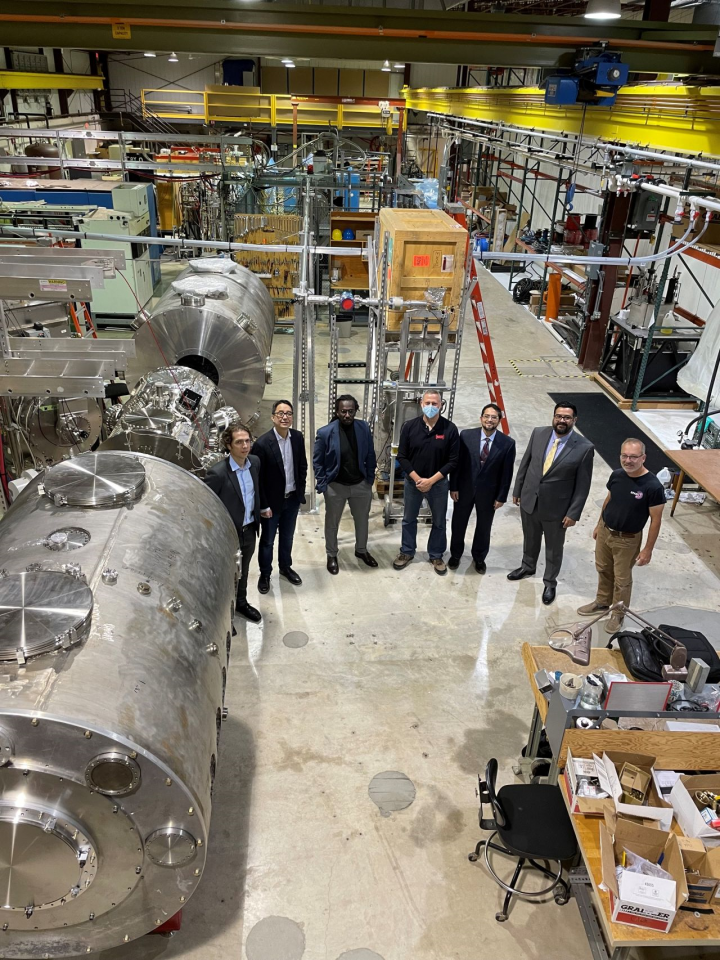New fusion energy strategies and partnerships announced at White House event
Just one week after the White House Office of Science and Technology Policy hosted a summit on domestic nuclear deployment, they filled a room again on June 6 for a livestreamed event cohosted with the Department of Energy to announce a new DOE fusion energy strategy and new public-private partnership programs, and to hear directly from stakeholders—including scientists, private fusion companies, investors, and end users—during panel discussions on fusion science and technology progress and the path to fusion energy commercialization.
The event was billed as a celebration of the two-year anniversary of the administration's launch of the U.S. Bold Decadal Vision for Commercial Fusion Energy. That vision was released in March 2022, also at the White House, and it included developing a strategy for accelerating commercial fusion energy in partnership with the private sector, with an aspirational goal of operating a commercially relevant fusion pilot plant in the 2030s.
Eight companies selected for the Milestone-Based Fusion Development Program in May 2023 will develop fusion pilot plant designs. Getting that program from announcement to reality was slowed by negotiations over program metrics and intellectual property over the past year. During his opening remarks, DOE deputy secretary David Turk was met with vigorous round of applause when he said that “We're happy to announce—thrilled to announce actually—that all eight selected teams are now officially signed awardees,” before thanking attendees for their patience.
The new strategy: At the event the DOE released two guiding documents: an agency-wide DOE Fusion Energy Strategy 2024 and a new plan for the Office of Science’s Fusion Energy Sciences program: Building Bridges: A Vision for the Office of Fusion Energy Sciences. Together, the documents will guide future DOE investments in fusion energy research, development, and demonstration. As part of Building Bridges, the FES program is developing yet another guiding document—a national fusion S&T road map “to address the ‘how’ and ‘when’ of closing critical S&T gaps to commercially relevant fusion pilot plants.”
“The development of fusion energy as a clean, safe, abundant energy source has become a global race, and the U.S. will stay in the lead,” Turk said. “We will leverage the opportunities enabled by our world-leading public and private fusion leadership, including humanity’s first-ever demonstration of fusion ignition at our National Ignition Facility as well as major new advances in technologies such as high-temperature superconductors, advanced materials, and artificial intelligence to accelerate fusion energy.”
More public-private partnerships: The FES program’s recently announced Fusion Innovation Research Engine (FIRE) Collaboratives, was celebrated at the event. The FIRE Collaboratives funding opportunity announcement was released May 22 as a “transformative initiative aimed at creating a fusion innovation ecosystem” with virtual, centrally managed collaboratives working on “end use–inspired” fusion science and technology R&D. The DOE announced $180 million for the collaboratives over four years, with annual awards of between $2 million and $5 million for each collaborative; the number of awards will depend on applications received. Preapplications are due on July 9.
One “innovative PPP model” suggested in the DOE’s new fusion energy strategy is a public-private consortium framework (PPCF) anchored by regional hubs: “The envisioned regional hubs would stimulate development of fusion supply chains and workforce while also supporting regional economic development and community engagements.”
The FES program is losing no time getting the PPCF assembled; a request for information on a proposed fusion energy PPCF was announced at the June 6 event and published in the Federal Register on June 7. The RFI says, “A key rationale for pursuing a PPCF at this time is because the required funding and pace of R&D and project delivery are not readily achievable within the [bold decadal vision] timeframe.”
As envisioned, the PPCF would “amplify” federal funding with state/local government, private companies, philanthropic funding, and partnerships to accelerate fusion energy commercialization. Through a phased approach, the PPCF, as a network of regional teams, could potentially deliver and operate small-to-medium scale R&D test stands “with the pace and required funding to meet the timelines of the Bold Decadal Vision.” As with the FIRE Collaboratives, the emphasis is on precompetitive R&D to resolve science and technology gaps that are common to multiple private fusion companies. Comments on the PPCF plan and its potential scope can be submitted through July 22.
Investments: DOE-SC’s FES program was funded at $790 million in fiscal year 2024—a record level—and the White House budget for FY 2025 would up that to $845 million. But some attendees believe the federal government should invest more to ensure its “decadal vision” deserves to be called a “bold decadal vision.”
Clay Dumas of Lowercarbon Capitol represented private finance during the panel on the path to commercialization, and he said that within his company’s portfolio of eight fusion companies, “I'm aware of more than a billion dollars that's been committed but not yet announced in the last 4 1/2 months, so there is money that is coming to the space.” He pushed for more public investment, saying, “We need the DOE to start taking the business of fusion as seriously as the science of fusion.”
The government also needs to take Chinese investments in fusion energy “more seriously,” Dumas said. “We developed photovoltaics in the U.S., but all the panels are made in China. We were about to harness the sun again and we shouldn't let the same thing happen. So, I think this is something for all of us to take more seriously now that fusion is really no longer a science project. We have to start treating it with urgency from a climate standpoint and economic standpoint, but also national security standpoint that it deserves.”








